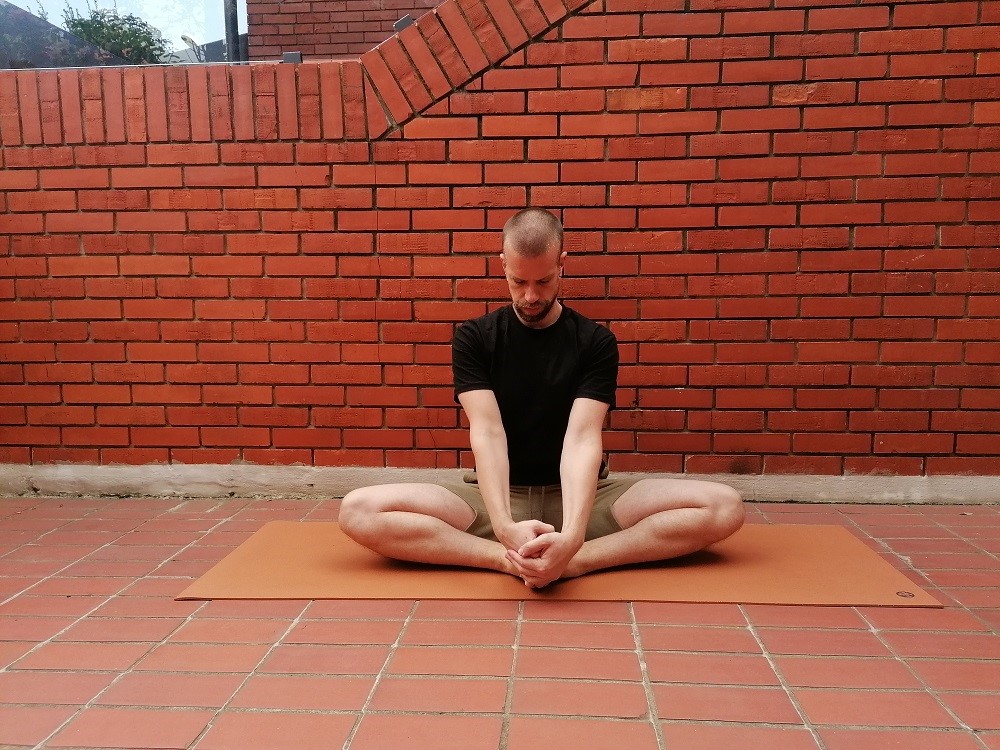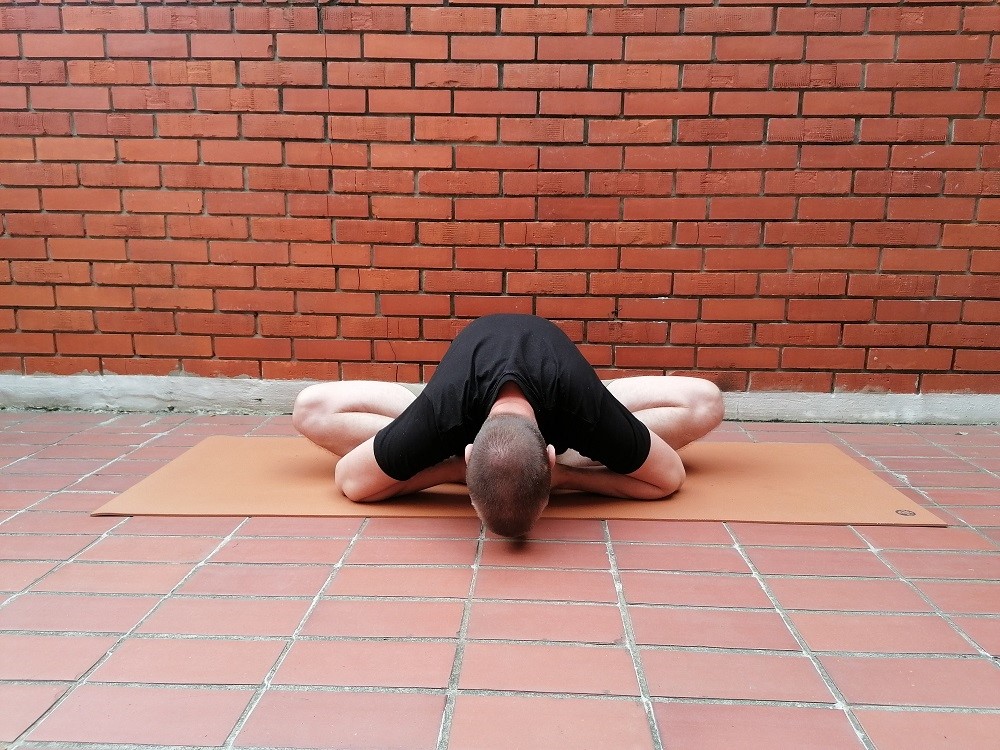Baddha konasana means “bound corner” in Sanskrit. This pose belongs to the category of sitting asanas. It is excellent for fine hip opening and groin stretching.
Although, at first glance, this asana does not seem too demanding, if your hips are not open and your groin is not well stretched, you will soon see your limitations when practicing this pose.
With that in mind, I would not agree with the very classification of this pose. According to the old writings, this asana belongs to the ranks of beginner poses. However, today, when the sedentary lifestyle is prevalent to a large extent, this once very easy pose for earlier generations becomes very challenging for most people today.
When performing this pose correctly, it is very important that your core is well developed. If you do not have a strong core when sitting in the correct position due to underdeveloped core muscles, your back will arch forward. In this way, you create a hump in the upper part of the back by closing the shoulder girdle and going with the chest down. Therefore, your entire upper musculature will not be active when performing this asana.
Accordingly, it is very important to work on the back muscles in addition to having open hips and stretched groins. The back in this pose should be finely stretched and completely straight. In this way, your chest will also be open; it will not collapse downwards.
It should be remembered that our bodies are simply not genetically predestined for certain asanas. The bone structure is not the same in all people, nor is the development of the muscles themselves. These two factors can significantly affect the correct performance of certain asanas.
The other name for this asana is the butterfly pose, since the pose of the legs itself resembles the butterfly wings.
Staying in the pose for longer (than 5 minutes) can be challenging, even for practitioners who have open hips and finely stretched groins. Regardless of this fact, some yogis use this pose exclusively during meditation.
PRACTICE AND VARIATIONS

When you enter this pose, you do it by sitting on the yoga mat with your legs extended forward. First, bend one leg at the knee, pulling the heel of that leg toward the center of the body. After that, bend the other leg at the knee and pull the heel of that leg toward the center of the body. Try to bring the soles, heels, and toes together. If you have succeeded in this, touch your toes with your hands and keep your arms fully extended.
The most important thing is that your back is completely straight. Do not bend your back at the expense of lowering your knees. Keep your back straight, while your knees drop as far as your body is comfortable. There is also the possibility of using a belt as an aid in trying to keep your back straight. However, I always insist on doing the variations without using too many props. In the case where the use of a belt is unavoidable, there is no other option.
If your knees are not fully lowered but raised, you can use the pillows or blocks to support them. Whether you use the pillows or blocks depends mainly on the fact that your knees are raised from the yoga mat. If they are close to the floor, the pillows are practical. If they are raised more than 45 degrees, the blocks are more practical.
A dynamic variation that works on gently opening the hips and stretching the groin involves slowly going up and down with your knees, like a butterfly moving its wings. Hence, the other name for this asana – the butterfly pose.
Another variation that works to gently open your hips and stretch your groin is to place a block under your feet. Once you place the block under your feet, slowly begin to press down on the block with your feet. In this way, your heels will open up, your hips will open slightly, and your groin will stretch. In this variation, place your palms behind you, pushing against the yoga mat. In this way, there is a fine stretching of your entire spinal column.
The most demanding variation of this pose is certainly the one where the upper part of the body is lowered forward with the forearms and elbows lowered in front of the legs. In this variation, the practitioner tends to make the forehead contact with the yoga mat. In this variation, you can gently pull your seat halves back to fully stretch your back and create a little more space for your upper body as you lower down.

BENEFITS
Before mentioning the benefits that this pose has for people who practice it, people who have recently injured their knees or hips must perform this pose with complete awareness and should not run away from the use of props.
When talking about the benefits of this pose from an energy point of view, one should keep in mind the fact that this pose leads to the activation of the first three chakras. The hips and lower back are the parts of the body where most people unconsciously accumulate stress and negative energy. Keeping this in mind, this pose helps to get rid of stress and bad energy, easing the tension in the hips and lower back.
Since I am also a yoga teacher for pregnant women, this is a pose that can be included in the practice of pregnant women during the second and third trimesters.
The pose itself is practiced in order to open the hips, stretch the groin, and strengthen the knees and ankles. It is also excellent for the proper functioning of the liver and kidneys, as well as for improving the circulation throughout the entire body.
Many teachers and instructors use it to relieve stress, anxiety, and depression.
CONCLUSION
If you are dealing with closed hips or groins that are not stretched enough, I definitely advise you to start practicing one of the listed variations of this pose. This pose falls into the category of those poses that, for most people, become more challenging as they get older.
If you have children who are under 9 years old, show them this asana. You will see that this asana does not pose any challenge for them. Children are naturally predisposed to most yoga postures.
And yes, always remember that your back must be stretched and straight at all times, no matter how much your knees are bent. Only in this way will you surely progress towards the correct and complete execution of this asana.







